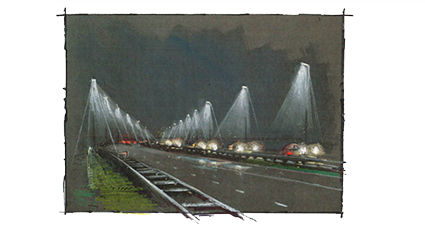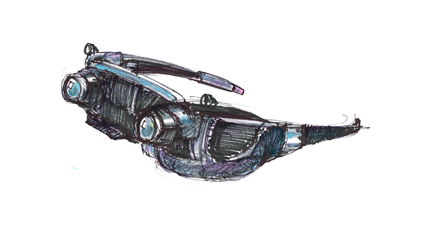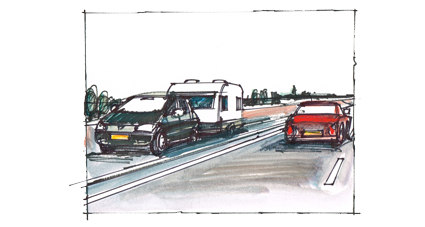Current scientific question
Is it feasible to develop an objective valuation method for the visual perception of motorists, that can be rapidly deployed to large quantities of test subjects?
This method will contribute to the development of new innovative public lighting concepts that are energy-efficient, durable and safe. The recent innovations in the field of eye-tracking bring this within reach.

Eye-tracking applications
To gather objective data from motorists, we will no longer rely on subjective questionnaires. Instead, we will measure the mental strain on the test subject in real time based on his or her autonomous reflexes. Because the real-time situation is highly dynamic, we chose to use eye reflexes to measure mental strain. Eye reflexes are incredibly rapid and occur in tenths of seconds, which makes them highly useful. Eye reflexes can now be measured simply and accurately using a set of eye-tracking glasses. One camera will record the external situation, while another will register the reflexes of the eye. This data is used to determine what the test subject is looking at, the subject's response times, the size of the eye's pupil and how frequently blinking occurs. Further investigation will determine if there are any other bio-responses that can be used to improve the dataset. Examples are brain activity, respiratory activity, heart rate and skin conductivity. Brain activity can be measured using a single sensor on the test subject's forehead. The sensor can determine which parts of the brain are active, the conscious or unconscious parts.

Ease of deployment to large quantities of test subjects
Test subject groups are as diverse as the variation amongst motorists (age, gender, vehicle type). The conditions in a test location can also vary greatly (for example, variable weather conditions and ambient light levels). In addition, there are environmental variables that influence the mental strain of motorists (presentation of low or high quantities of additional information). All these variables need to be taken into account and measured across a statistically significant sample size in an effort to accumulate representative and objective data. The measurements must thus be conducted on large quantities of test subjects with relative ease. Eye-tracking methods offer excellent opportunities in this regard. Our preliminary study shows that until now, no studies have been conducted in this manner. To provide an oversight of the fields on which the valuation method can be applied, we created a research matrix that breaks up the study into parts, that can if necessary, be conducted by third parties.

From simple to complex environment
To determine all the factors that influence traffic safety, eye-tracking has to be applied to an all-inclusive range of test subjects under all possible situations. This would be a lot of work, possibly too much work. For this reason, the study is set up to first measure viewing behavior in a simple environment over which we have full control (a tunnel). After the results have been collected, we will determine how behavior changes when changes are made to the environment. Test subjects will be confronted with increasingly complex environments (Such as the Afsluitdijk dam) and anomalous behaviors recorded. Eventually, we will be able to give a rating to each individual visual supporting or impairing factor that can be used to set better criteria for lighting, road markings etcetera.

Eye-tracking-Plus
During the course of the study, it is likely that specialized eye-tracking headsets will be developed, that can measure and register all relevant data from the test subject as well as the environment simultaneously. Algorithms will have to be developed to automatically recognize and analyze eye movements. For this reason, the study will be conducted in close partnership with the private sector and educational institutions.
